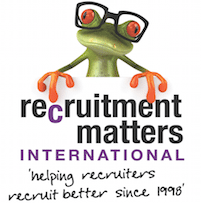Written by RMI’s MD, Ken Kemp.
I rather liked these commonsense ideas http://bit.ly/kkothersources from Josh Tolan, CEO of Spark Hire on alternative sources of candidates if your talent pool has run dry.
The 2016-2017 Talent Shortage Survey from Manpower Group found that 40 percent of employers worldwide are having trouble filling vacant positions. Worse, no one seems to be doing anything about it. The same survey found that only 36 percent of companies are attempting to tap into new candidate pools. If you are part of the 64 percent who continue to fish in the same old pools with the same bait, perhaps some these options might help spark off some alternative thinking.
1. Graduates on a Gap Year
Graduates who take a gap year have the same education qualifications as those who are recruited straight out of college or university, but they also offer valuable skills that set them apart. Many people spend their gap years travelling, where they learn how to communicate and interact with a wide variety of people. Those skills are in high demand with employers.
So, how do you attract these types of candidates? You could research websites and blogs that those on gap years frequent. Look for content and forums about entering the workforce after a gap year and share information about your company to get on these candidates’ radars.
2. Customers
Customer and client bases are great places to find loyal employees. These are people who already believe in and support the company, so it’s not a difficult transition to become an employee.
In order to recruit from this candidate pool, you need to focus on the relationship that is already in place and build upon it. You probably already have an established way to contact these potential employees, whether it’s an email list or perhaps via Twitter. Use those avenues to share employment opportunities.
Include job listings at the bottom of your email shots. Share aspects of your company culture on social media. Doing these things will get talent to start thinking of you not only as a brand, but also as a possible source of employment.
3. Runner-Up Candidates
It’s not possible for every candidate who has applied for a job to receive an offer. There is always a runner-up – and often there is very little separating that candidate from the one who got the job. Keep track of these candidates. If they weren’t the right fit for one job, reach out to them when a more suitable role opens up.
4. Parents Returning to the Workforce
It’s not uncommon for both men and women to take breaks in their careers in order to raise their children. However, it’s not always easy for parents to return to work. Companies can tap into this candidate pool by offering strong training programmes for employees. Make it clear in recruiting material that employees who need to improve or update their skill sets will have that opportunity.
Also keep in mind that flexible work options go a long way when trying to attract working parents.
What are you doing to cast a line in new and exciting places?


